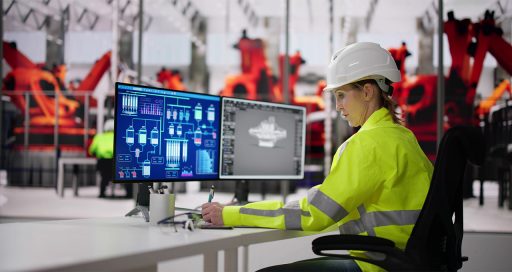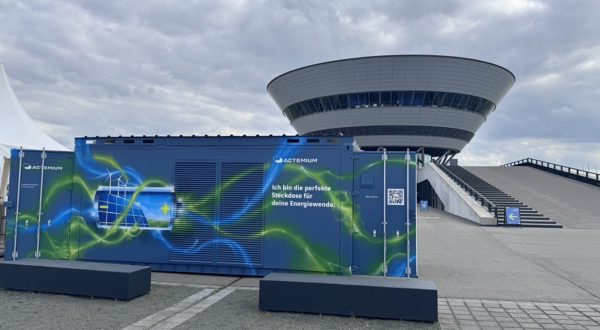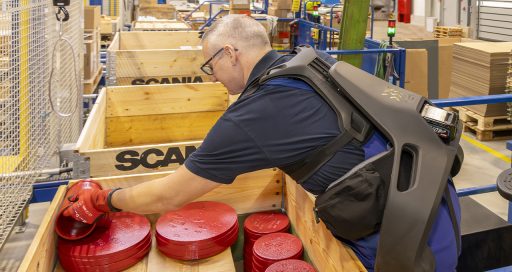In the booming industrial robotics market, the VINCI Energies industry brand has, through its extensive network of business units, developed the expertise to position itself as a major player in the sector by integrating every type of expertise.

From enhanced flexibility, lower costs, increased productivity and improved quality to reduced workplace risk and the elimination of arduous tasks – industrial robotics offers numerous advantages. To support its customers in their implementations of robotic applications, Actemium, the VINCI Energies industry brand, has acquired a broad palette of expertise to become a noted industrial integrator in this field.
“We possess every kind of expertise related to robotics,” says Actemium Brand Director Christophe Rousseau. “From consulting to design and installation, we manage operations in their entirety for a turnkey delivery.”
The automotive industry is the most mature market in terms of robotics, and Actemium is naturally a strong presence within it. But the healthcare and logistics sectors are also rapidly automating their operations, especially since the COVID crisis. In the logistics market, Actemium is also highly active through its “Intralogis’Team” club, made up of 19 companies and more than 1,000 experts in five countries, which generated revenue of €98 million in 2023.
Opportunities
Among the new growth opportunities in the field of robotics, Actemium is targeting specific areas of expertise such as welding, polishing, deburring and painting, as well as the full range of recycling activities.
“Manufacturers are now obliged to guarantee the recyclability of their products,” explains Lionel Kaddah, Head of Business Development at Actemium Bonnétage Automation. “The recycling loops now being established still rely largely on the manual disassembly of equipment, but this will eventually need to be automated using robotic systems” (see also Ali Hamdan’s post on disassembly).
In addition to waste reclamation, Actemium’s future lies in sectors such as agrifood and retail, with the automation of tasks such as pallet, box and bin stacking, and 3D bin picking (automatic object recognition and picking using 3D vision).
Concurrent engineering
To accelerate its expansion in the booming robotics market, Actemium will rely on four key assets: concurrent engineering, re-use/retrofitting, agility and cybersecurity. “Concurrent engineering, from the customer’s point of view, means involving us in a product development project from the outset,” explains Lionel Kaddah. “This can considerably reduce the time to market, which is a crucial advantage for the customer wishing to stand out from its competitors.” With concurrent engineering, the construction time for a specialised machine can be reduced by almost 40% compared with a conventional project.
“From consulting to design and installation, we manage operations in their entirety for a turnkey delivery.”
There are also significant advantages in terms of cost. “When you buy a machine 30% cheaper in Asia, you need to analyse the overall cost, which can end up quite high when the distance is taken into account. The time savings and reduced follow-up you get with concurrent engineering can limit this type of extra cost,” says Lionel Kaddah, adding that “This type of collaboration requires a strong trust relationship with the customer, as they are opening their doors to us very early in the development of their product.”
Re-use and retrofitting
Another asset available to Actemium in developing its robotics business is its re-use and retrofitting capability. The VINCI Energies industry brand has made this a development priority, particularly with historic customers it has already supplied with machinery.
For Lionel Kaddah, “These types of operations are a response to our customers’ major expectations: to make savings, reduce equipment lead times, and generate environmental benefits – primarily by limiting the quantities of raw materials used.”
Retrofitting is about more than simply renovating physical equipment. “In visually enabled robotics installations, for example, adding AI can improve quality performance without having to physically change equipment, simply by installing new software on the vision controller,” says Frédéric Boulvert, Business Innovation Engineer at Actemium Rennes, the chair of the Actemium Robotics Club’s Advanced Industrial Robotics working group.
The integration of AI is, of course, a key issue. “There is an abundance of new applications, enabling us to strengthen the solutions we can offer. But before plunging in, it is essential to fully master the AI to obtain the best results,” says Lionel Kaddah.
Agility
Actemium’s agility is also key to its strength in the robotics market. Whatever the workload for any one of its business units, each can count on other entities in the network to meet a customer’s needs within the allotted timescales.
“We are not only highly responsive, we are also proactive, with the ability to guide the customer toward standardised solutions we have developed, such as robots capable of placing parts on trays for watch making, and robotic parison cutting cells for plastics processing,” continues Lionel Kaddah.
Cybersecurity
One last crucial point and an increasingly strategic aspect of robotics is cybersecurity. Previously, production machinery was managed by automation systems that handled communication with the various workstations between them. But today’s businesses need to communicate with their machinery in real time, to monitor production and even initiate production of live orders.
To do this, machines must be connected to the factory’s CAPM (computer-aided production management) system. “Nowadays, there’s no discussion of computing without talking about cyber risk,” explains Lionel Kaddah. “We now have connected machines at almost every customer site, mainly for remote maintenance. We and our customers are therefore potential targets for hackers. Because of this, in collaboration with Axians, we offer tools to protect systems and minimise failures.”
Concurrent engineering, re-use and retrofitting, agility, and cybersecurity: Actemium can mobilise all these areas of expertise to offer its customers bespoke turnkey solutions. One example of this is the automated unit fitted with a Japanese humanoid industrial robot designed and installed by the VINCI Energies industry brand for an electrical equipment manufacturer to perform complex assembly tasks including gluing parts and fitting them together.
The strength of an international and local network
Over the past 10 years, the VINCI Energies industry brand has developed an extensive specialist network in France and internationally. Having grown from 18 business units with robotics expertise in 2015, all based in France, the Actemium network now comprises 55 entities specialising in the field, 21 of which are in 10 countries other than France, including Belgium, the Netherlands, Germany and Spain. Actemium’s robotics business, which includes robotics installations, specialised machines and mobile robots, grew by 50% between 2021 and 2023. “While we are extremely active in the automotive sector, which accounts for 50% of our activity, we are also present in the markets for capital equipment (13%), medical devices and pharmaceutical products (10%) and agrifood (10%), plus aeronautics, watch making, luxury jewellery, etc.” says Lionel Kaddah, Head of Business Development at Actemium Bonnétage Automation.
10/17/2024





